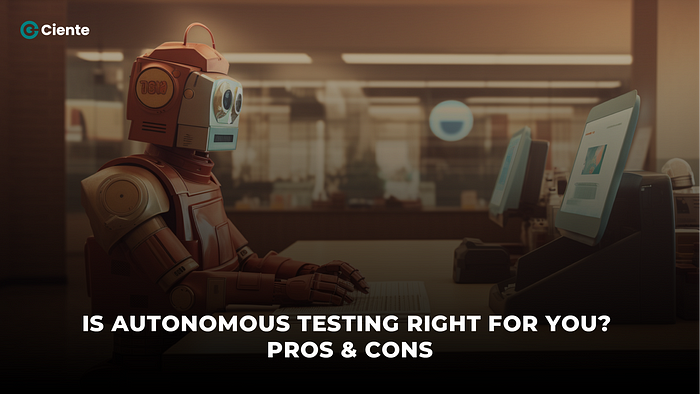7 Incredible Ways To Accelerate Your Sales Strategies Through SalesTech

Strong8k brings an ultra-HD IPTV experience to your living room and your pocket.
In the rapidly shifting realm of sales strategies, mere selling is no longer the key to business growth and success. A modern-day sales strategy is a complex blend of creativity, data-driven insights, customer-centricity, and, most importantly, a high level of technical savvy. Today, the emerging field of Sales Technology, commonly referred to as SalesTech, is driving a revolutionary shift in sales tactics and strategies. As per LinkedIn, over half of the sellers, 54% to be exact, view sales technology as a valuable asset in building better relationships with their buyers. With an increasing number of businesses recognizing its potential, SalesTech is shaping the future of sales.
What is SalesTech?
SalesTech is an emergent field referring to a wide variety of software, tools, and systems specifically designed to enhance, streamline, and automate sales processes. This technology’s main aim is to increase efficiency, optimize sales strategies, and ultimately drive sales growth. From automating routine tasks to providing invaluable insights through predictive analysis, SalesTech plays an increasingly pivotal role in the modern sales landscape.
7 Innovative Approaches to Supercharge Your Sales Strategies with SalesTech
1. Embracing Automation to Redefine the Sales Process
Today’s corporate climate is extremely competitive, which makes efficiency enhancements even more vital. More and more members of sales teams recognize time as a resource of paramount importance. This is where automation software for sales comes in. With SalesTech, firms can automate follow-ups, email distribution, and report creation. Because of this, salespeople are free to devote more time and energy to developing relationships with customers and crafting proposals that are more likely to result in a purchase. According to Salesforce, a staggering 97% of sales executives and sales operations professionals believe that AI affords sales representatives more time for selling. It’s not about replacing the human touch, instead, it’s about using technology to support and augment it.
2. Harnessing the Power of AI for Data-Driven Sales
Artificial intelligence (AI) is becoming more than a passing trend; it’s a core component of successful business practices everywhere. Our perspective on data has been completely transformed by AI-powered sales tools, which sift through massive data sets to reveal patterns and insights that would otherwise go overlooked. These resources can advise on the most effective ways to close a sale with a given client or set of circumstances. Using AI in sales is like having an advantage over the competition because you already know your customer’s preferences and buying habits.
3. Unlocking Customer Insights with CRM Systems
In the field of SalesTech, customer relationship management solutions are revolutionary. They provide a 360-degree perspective of the customer journey by allowing businesses to monitor consumer interactions across all channels. With this in-depth understanding, sales teams may better cater to their client’s wants, needs, and buying habits. Businesses can improve their chances of making sales by focusing on customers.
4. Forecasting Success with Predictive Analytics
Businesses may see into the future of their sales numbers with the help of predictive analytics. This powerful tool may look at historical and current data to make predictions about customer behavior and sales patterns. With this information, firms can better target high-value clients, anticipate their needs, and develop effective sales strategies. With the use of predictive analytics, organizations can anticipate customer needs rather than simply respond to them, giving them an edge in the competitive world of sales.
5. Enhancing Communication with Sales Enablement Tools
Effective sales tactics can only be achieved with the help of sales enablement tools. These mediums facilitate effortless, real-time interaction between sales personnel and prospective customers. They provide assistance with content administration, insights in real-time, and instruction in efficient sales techniques. These solutions can greatly increase revenue by facilitating consistent messaging and timely distribution of relevant content.
6. Visualizing Success with Data Visualization Tools
Despite its utility, data can be difficult to process and understand. Tools for visualizing data can be advantageous in this situation. These technologies help firms better grasp and communicate insights by transforming complex data into visually appealing and easy-to-understand formats. Data visualization is an effective tool for enabling quicker and better-informed decision-making, whether the goal is to track sales success or to uncover previously undiscovered trends.
7. Optimizing Pricing Strategies with Price Optimization Tools
Finding the appropriate pricing is crucial to a product’s commercial success, but it can be complex to achieve. Tools designed for price optimization can streamline this procedure by analyzing factors like market demand, rival pricing, and customer behavior to provide optimal pricing structures. Adopting such tech-driven pricing methods allows companies to increase earnings and sustain a competitive edge.
The Future of SalesTech
The future of SalesTech is bright, and it promises to grow at an exponential rate in the coming years. Insights into customer behavior and sales patterns will be further refined as AI, machine learning, and data analytics advance.
The growth of SalesTech is indicative of how much the use of technology has altered conventional approaches to closing deals. Artificial intelligence (AI), robotic process automation (RPA), and predictive analytics are just some of the tools that provide organizations an edge and fuel revenue expansion in today’s increasingly digital economy. In today’s digital age, success requires being abreast of cutting-edge innovations and sales-boosting tactics.
Intelligent automation of routine operations is on the horizon, which bodes well for productivity. The accuracy and robustness of predictive analytics will continue to improve, leading to more accurate predictions.
Furthermore, there will be less friction when integrating various SalesTech products, leading to consolidated platforms that provide all-encompassing sales solutions. SalesTech tools will become increasingly important as they allow for more customized and interesting interactions with customers.
The Art of Crafting a Robust Sales Plan with SalesTech
Designing a robust sales plan that effectively employs SalesTech is no small feat. It requires strategic planning, a deep understanding of customer behavior, and the ability to harness the power of technology to meet sales goals. Here, we break down the journey into manageable steps to navigate this process and set your business on the path to success.
Step 1: Know Your Customer
Every successful sales plan starts with an in-depth understanding of the customer base. Use SalesTech tools to decode customer data, uncovering their needs, preferences, and behaviors.
Step 2: Set Clear Sales Goals
Define specific, measurable, achievable, relevant, and time-bound (SMART) sales goals. SalesTech can provide insights to make realistic and informed objectives.
Step 3: Select Suitable SalesTech Tools
With various SalesTech tools available, select the ones that align best with your goals and customer needs. Consider tools for customer relationship management, predictive analytics, and process automation.
Step 4: Train Your Team and Monitor Performance
Invest in training to ensure your team can maximize the use of the chosen tools. Continually monitor performance using SalesTech, and adjust your strategy based on real-time insights to remain agile.
Creating a SalesTech-empowered sales plan is an ongoing process that requires understanding customers, setting clear goals, selecting the right tools, and regularly evaluating performance. These steps will guide you toward a more efficient and effective sales strategy.
Conclusion
In conclusion, SalesTech is not just a trend but a fundamental shift in how sales are conducted. It is a transformative force, equipping sales teams with powerful tools and techniques to excel in the new age of sales. As we continue to uncover its potential, one thing is definite: The SalesTech revolution is here, and it is redefining the world of B2B sales as we know it. The sooner we recognize and adapt to this, the better equipped we’ll be to succeed in this exciting new era of sales.
Why Ciente ?
With Ciente, business leaders stay abreast of tech news and market insights that help them level up. now, Explore More,
Follow us for more such blog posts.
Note: IndiBlogHub features both user-submitted and editorial content. We do not verify third-party contributions. Read our Disclaimer and Privacy Policyfor details.







